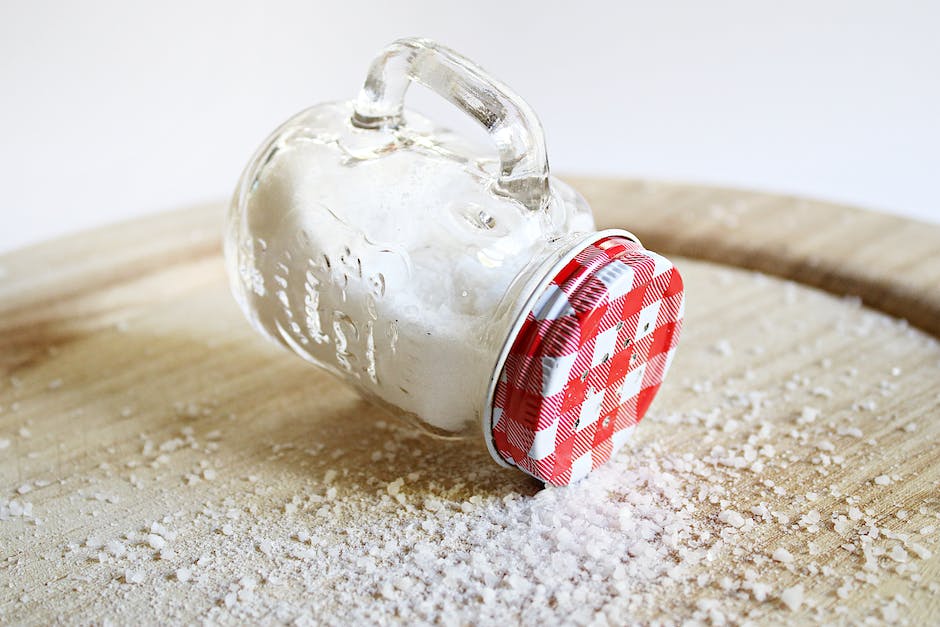Celtic Salt vs Sea Salt: An In-Depth Comparison for Health-Conscious Consumers
When it comes to seasoning your food, the type of salt you choose can make a significant difference not only in taste but also in health benefits. Celtic salt and sea salt are two popular options that often lead to a debate among health enthusiasts and culinary experts. In this comprehensive guide, we’ll delve into the nuances of Celtic salt vs sea salt, answering commonly searched questions and providing you with the information you need to make an informed decision for your dietary needs.
Introduction: A Pinch of Clarity in the Salt Debate
Salt is an essential ingredient in our daily diet, but with so many options on the market, it can be challenging to determine which type is the best for your health and culinary uses. Celtic salt and sea salt are touted for their flavor and mineral content, but how do they really compare? This article will explore the differences and similarities between these two types of salt, examining their origins, mineral composition, health benefits, and culinary uses. By the end of this post, you’ll have a clear understanding of which salt might be the right choice for you.
What is Celtic Salt?
Origins and Production
Celtic salt, also known as Sel Gris or “grey salt,” is harvested from the clay-lined salt ponds in the Brittany region of France. The traditional method of harvesting by hand ensures that the salt retains its natural moisture and a rich spectrum of minerals.
Nutritional Profile and Benefits
- High in trace minerals
- Lower in sodium compared to table salt
- Contains natural moisture
Celtic salt is known for its distinctive grey color, which comes from the clay found in the salt flats where it is collected. This type of salt is minimally processed and is valued for its trace mineral content, including magnesium, potassium, and calcium.
What is Sea Salt?
How It’s Made
Sea salt is produced through the evaporation of seawater, typically with little processing. This allows sea salt to retain many of the minerals naturally present in the ocean.
Varieties and Mineral Content
- Comes in various textures and coarseness
- Mineral content varies based on the water source
- Generally has a more complex flavor profile
Sea salt can be found in many parts of the world and its mineral content and taste can vary greatly depending on the region from which it is harvested. It’s known for having a crunchier texture and is often used as a finishing salt.
Comparing Celtic Salt and Sea Salt
Mineral Composition and Health Implications
Both Celtic salt and sea salt contain an array of minerals that are beneficial for health. However, the mineral composition can vary greatly between different sea salts, while Celtic salt has a more consistent mineral profile due to its specific source and harvesting method.
Taste and Culinary Uses
- Celtic salt: Moist, granular texture; ideal for cooking and finishing
- Sea salt: Crunchy texture; preferred as a finishing salt
Celtic salt’s moist texture makes it especially suitable for cooking, as it dissolves well and distributes minerals evenly. Sea salt’s varied textures make it versatile in the kitchen, suitable for both cooking and as a decorative finishing touch.
Commonly Asked Questions
Is Celtic Salt or Sea Salt Better for You?
The “better” salt depends on your personal health goals and taste preferences. Both salts offer a range of minerals and can be part of a healthy diet when used in moderation.
Can You Substitute Celtic Salt for Sea Salt in Recipes?
Yes, you can substitute Celtic salt for sea salt in recipes. However, due to differences in moisture content and texture, you may need to adjust the quantities to achieve the desired flavor.
How Do Celtic Salt and Sea Salt Impact Blood Pressure?
Like all salts, excessive consumption of either Celtic salt or sea salt can contribute to high blood pressure. It’s important to use them sparingly and be mindful of your overall sodium intake.
Conclusion: Seasoning Your Diet with Knowledge
In the debate of Celtic salt vs sea salt, there is no clear winner. Both salts offer unique flavors and health benefits that can enhance your culinary experience. By understanding their differences and similarities, you can make an informed decision that aligns with your health goals and taste preferences. Remember to use salt responsibly as part of a balanced diet to reap the benefits without overindulging. Whether you choose Celtic salt or sea salt, you’ll be adding a sprinkle of nutrition and flavor to every dish.


